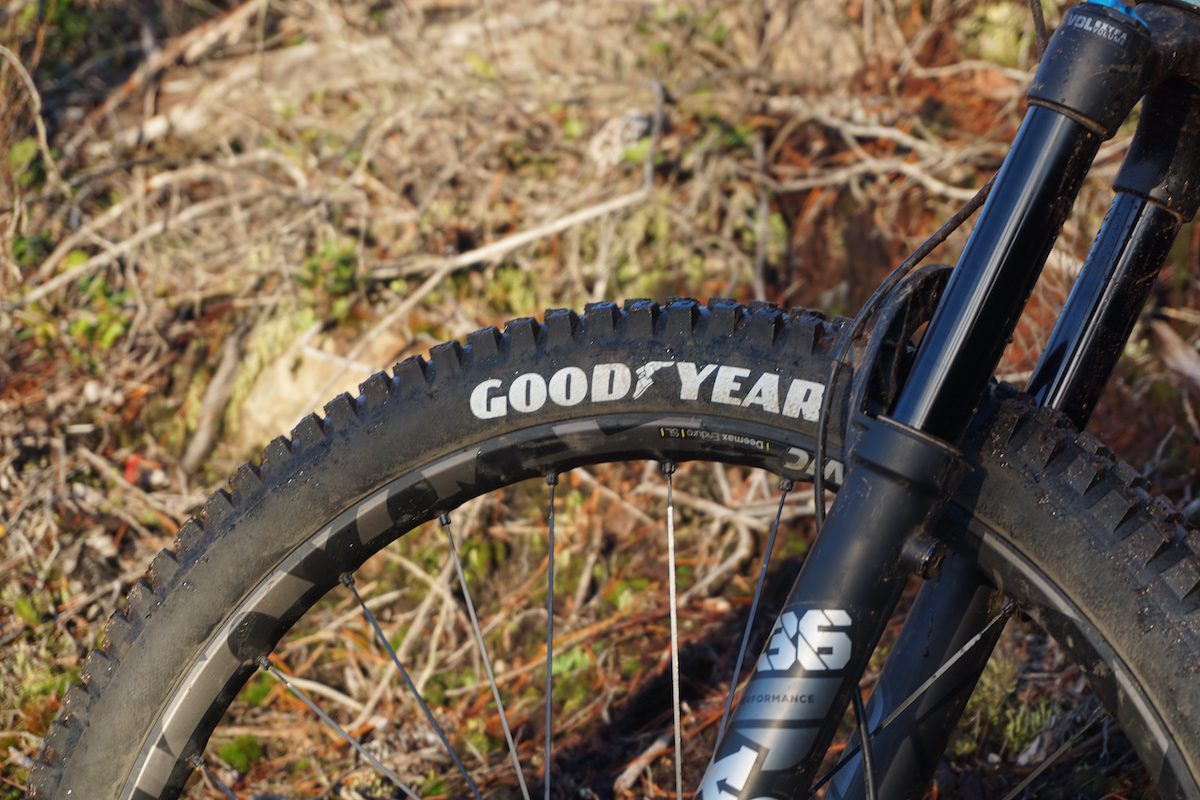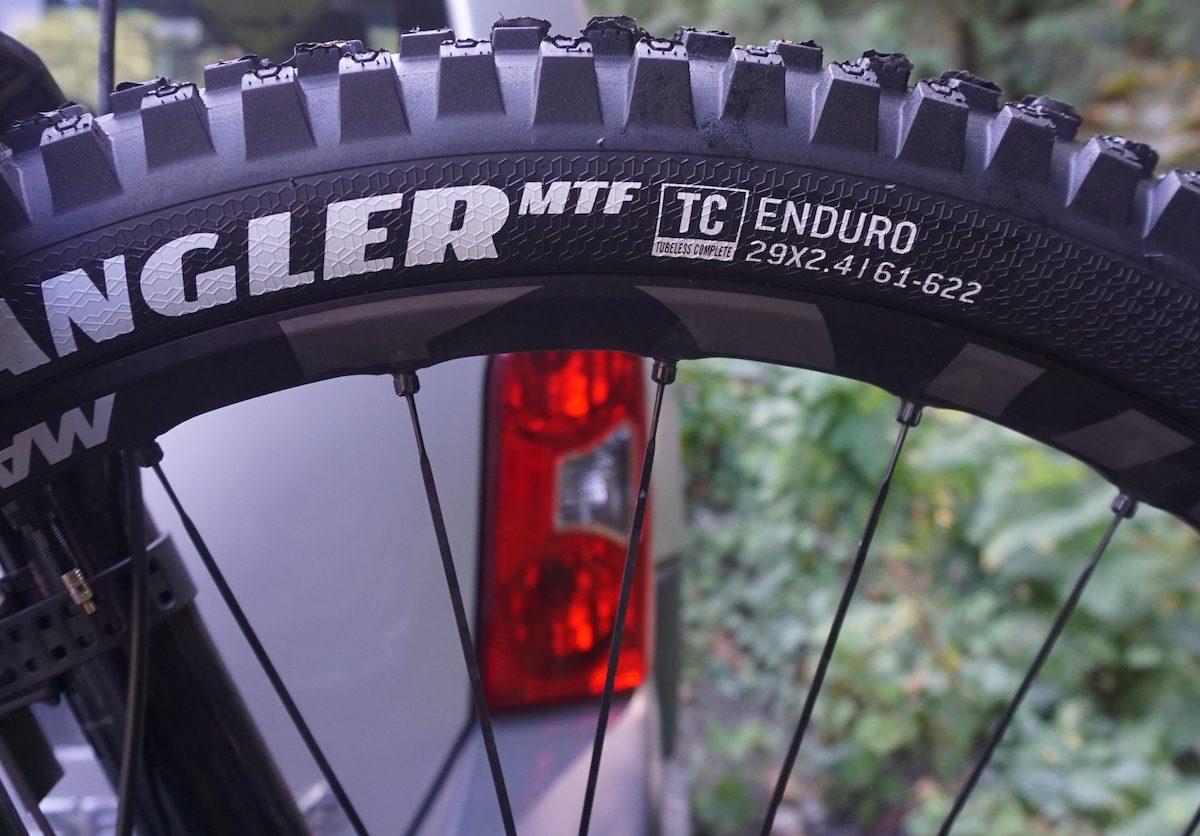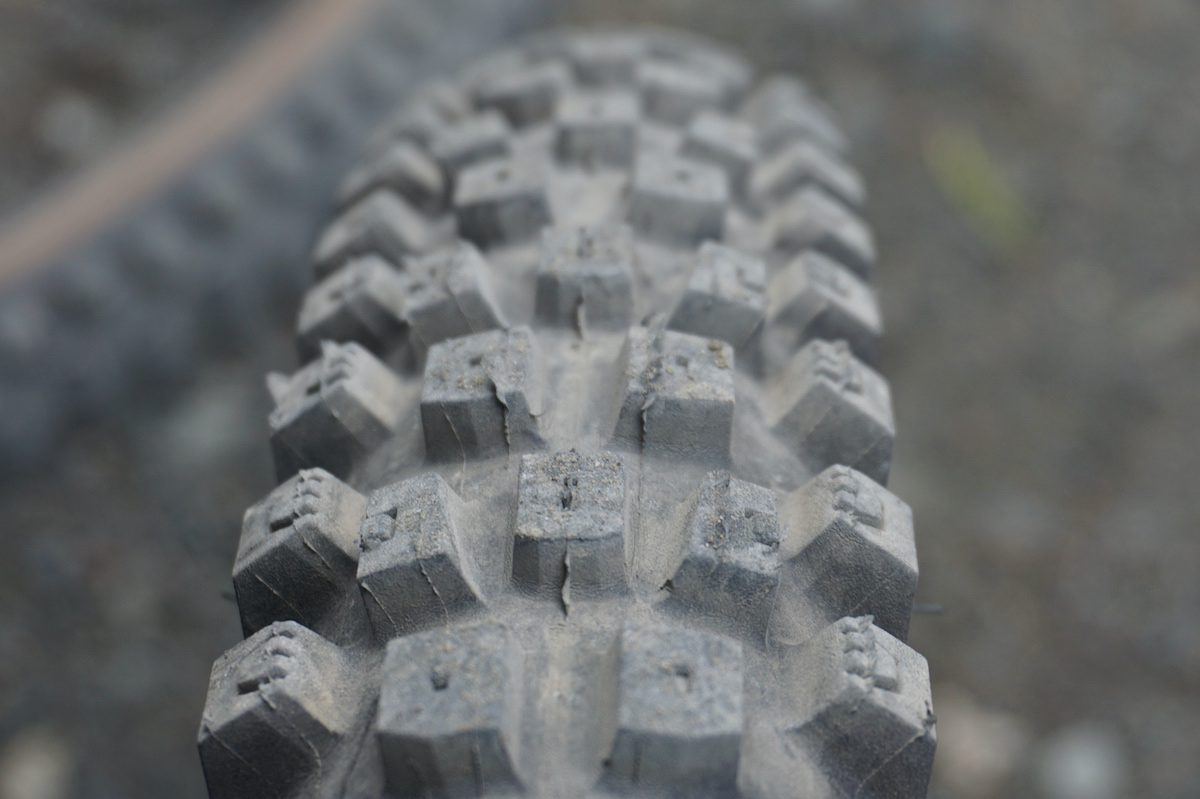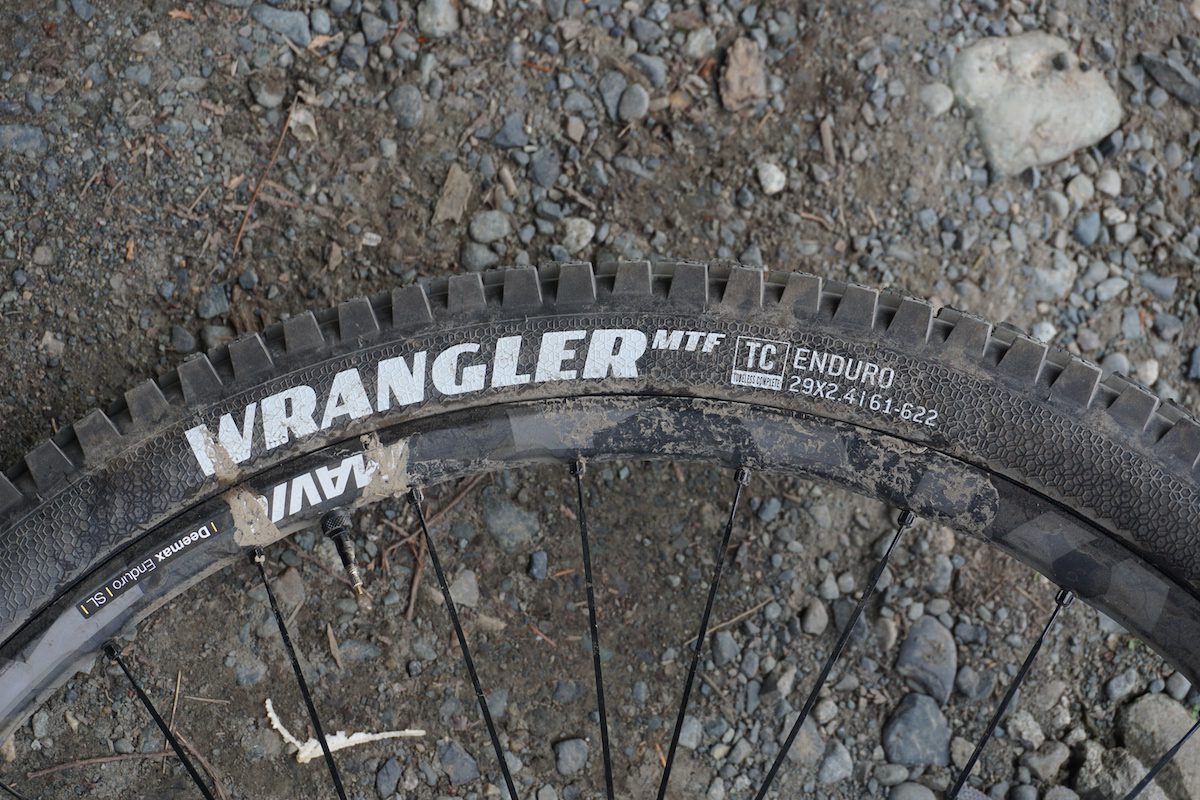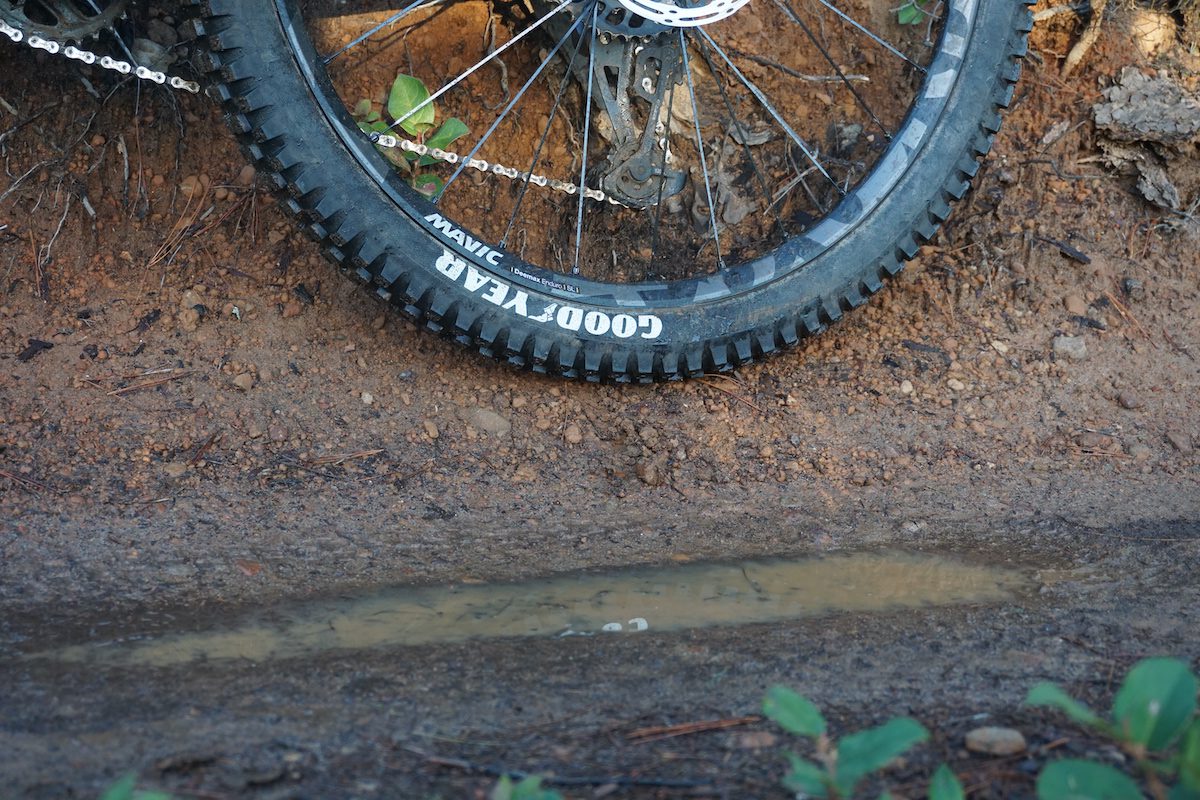Goodyear has an exceptionally long history in making automotive tires, but its return to bikes is more recent. While initial efforts didn’t necessarily match the brand’s reputation, the newer Wrangler MTF and MTR are stand-out options. Both the front- and rear-specific tire bear a strong resemblance to some aggressive treads from the competition, but with some important changes to set Goodyear apart.
The result is a tire that thrived in all conditions, from the dusty dry days of summer to the slippery, treacherous roots and rocks of fall and winter riding.
As metioned, Goodyear modells the Wrangler’s after one of the more popular gravity tires out there. There’s tall, block-ish knobs with only the slightest ramping, prioritizing grip over rolling speed. The rear-specific MTR uses a 2-3-2 tread pattern, with the row of three nearly touching the well-spaced and well-supported side lugs. The alternating row of two gives some room for debris to clear out and the slightest siping should let the individual knobs conform, somewhat, to the surface. The MTF tire switches to a 2-2-3 tire, giving more space to clear debris and a slightly lighter weight.
The Enduro casing we tested has noticeably more supportive sidewalls than some other brands, making it a good option for those who want protection but don’t want to mess with inserts. Goodyear’s latest offering comes with a suitably slow-returning and tacky Grip3S rubber compound that stays confident was rocks and roots get greasy, which was not the case with the Newton’s we tested.
Goodyear offers the Wrangler MTF in 29″ only, with a choice between 2.4″ or 2.6″ widths. The Wrangler MTR comes in 27.5×2.6 or 29×2.4″ sizes. There’s also a Downhill casing and an ElectricDrive option with more support and tougher construction for eMTB use. Weights run from 1,315g for the MTR in 29×2.4 to 1,095g for the 29×2.4″ MTF. Tires are $124.99 each in Canada.
Roping in real world conditions
I enjoyed the Wranglers all fall and well into the winter. But I think the strength of Goodyear’s new tire is best exemplified by an early-season ride this spring. That’s a great time of year for testing tires as conditions can be great, or terrible, or swing wildly and unpredictably between the two.
The trail started off with high-speed, chunky sections out in the open where the dirt was loose but the rocks were dry. Fast enough that the Wrangler’s supportive casing didn’t squirm or give out on the rocks and still dug in and had the support to really lean into loose dirt corners. At the same time, the Wrangler’s had the traction needed when this trail ducked into some thick trees. Over a few metres, dry dirt turned into sloppy muck intertwined with a mess of greasy roots and rocks. To make everything just a bit more exciting, just after entering the trees, it pointed directly down the mountain.
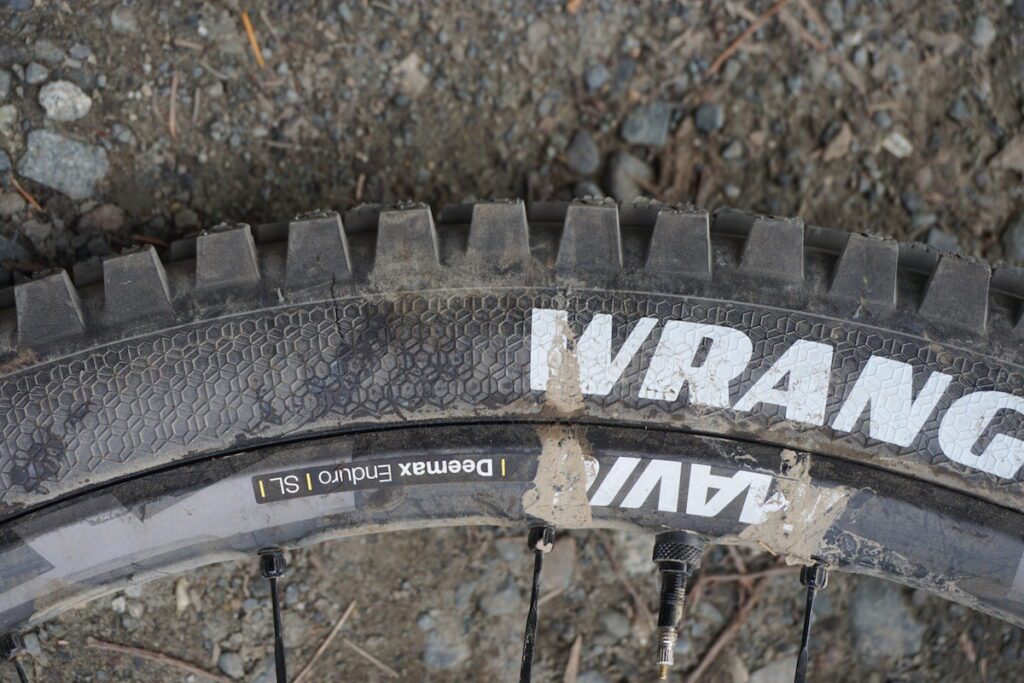 Solid, well-supported side lugs stand up well in cornering
Solid, well-supported side lugs stand up well in cornering 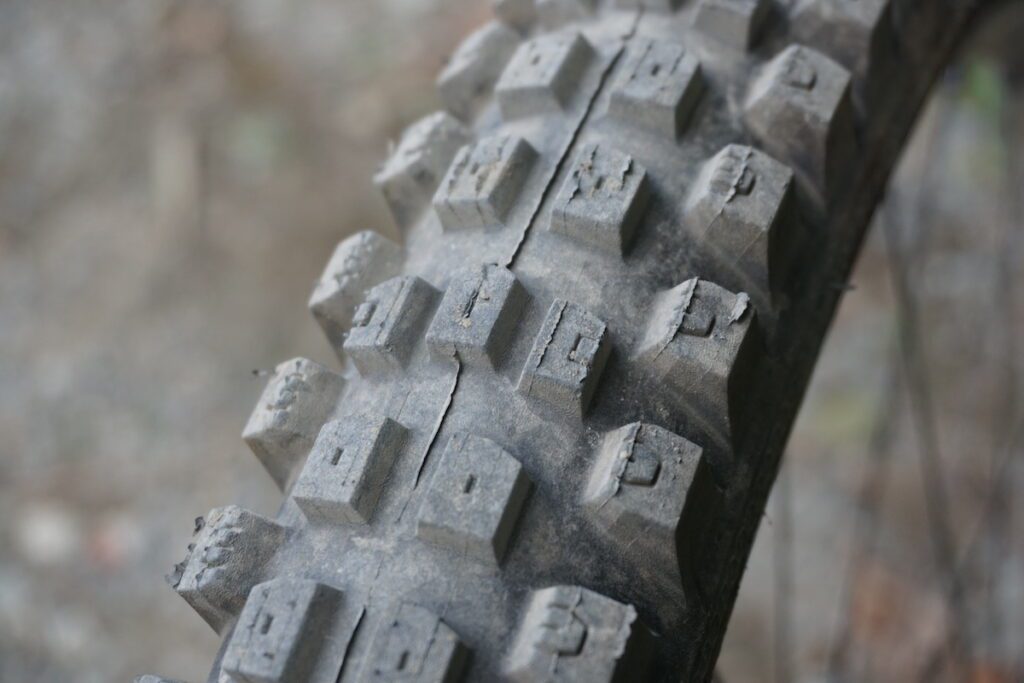 Tall, square lugs are about traction, not rolling speed on pavement
Tall, square lugs are about traction, not rolling speed on pavement 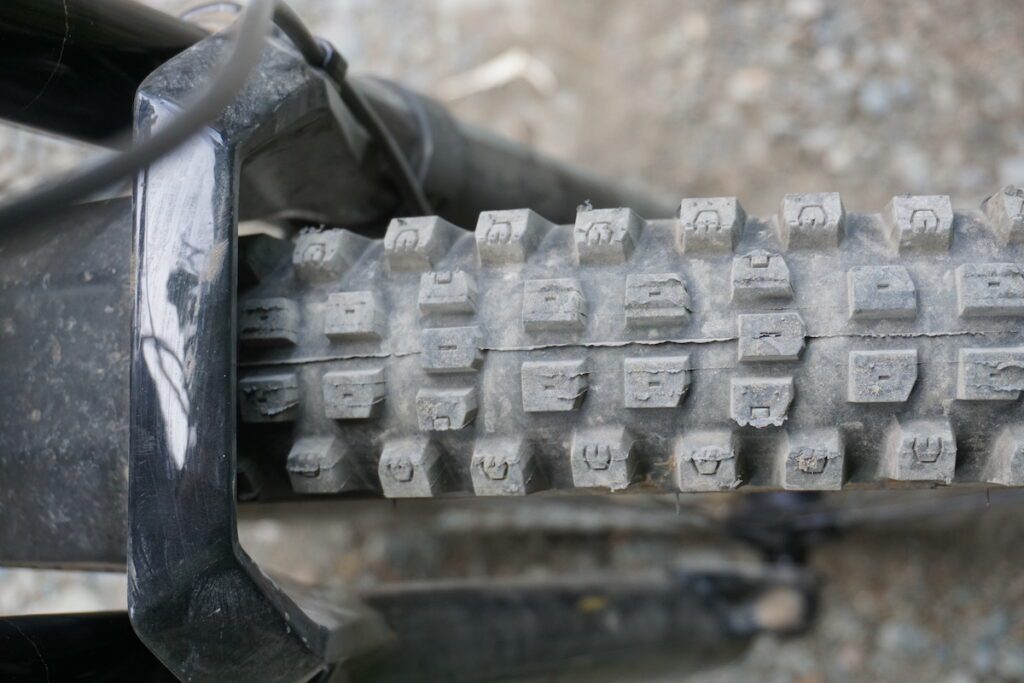 There’s enough space to clear dirt, so the Wrangler’s keep holding traction instead of packing up
There’s enough space to clear dirt, so the Wrangler’s keep holding traction instead of packing up 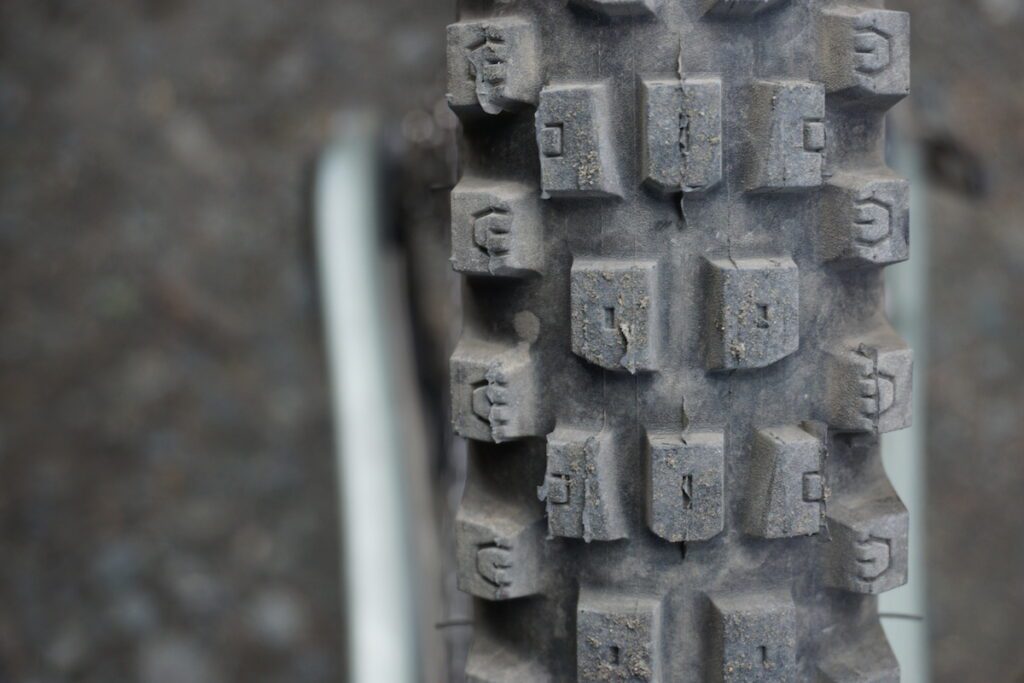 The rear uses slightly closer spacing and a 2-3-2 pattern
The rear uses slightly closer spacing and a 2-3-2 pattern
Flying into the shade at a speed more appropriate to dry conditions, and with confidence to match, I was moving way to fast for the wet, fall-line traction-free surfing. On a lesser tire, this would have spelled disaster. The Wranglers have enough bite that I was able to reign in my speed and are tacky enough that I didn’t immediately slide out on the wet rock. Somehow I made it through with just a warning and no real consequences for my foolhardy endrance. There aren’t a lot of tires that can so capably handle those two very different demands – speed over rough and then wet and steep – so seamlessly.
Wranglers’ still aren’t the lightest tire out there, or the fastest rolling in a straight line. But they make up for the weight with supportive sidewalls and perhaps slower rolling speed with oodles of control. Goodyear’s joined the growing crowd that realise that big, square lugs that make a tire able to brake later, corner faster and generally have more control to carry speed in hairier situations is more important – and faster overall – than how fast you go on a straight section.
Review: Goodyear Wrangler MTF/MTR
There’s a dofference between riding roots and wet rocks, where you’re attacking and picking lines, and just trying to survive. These tires allow you to attack. To ride fast and brake late with confidence. Even on tricky wet/dry mixed rocks. When the trails dry out, the Wranglers really like to dig into the deep loose stuff, with the confidence and support to really lean the bike over without worrying about sliding. The near-continuous coverage from center tread to side lugs also makes the Wrangler’s really predictable when transitioning between a straight line and corners.
Goodyear’s Wranglers hunted for traction in almost any condition. I knew I could throw them into any scenario and they’d hold up just fine, even with the weight of an eMTB behind me (Goodyear does offer an “ElectricDrive” option if you’re really sending it on the eeb, but on an SL eMTB I was quite fine). I liked that there was more sidewall support, so I could run slighly lower pressures without the tire feeling squirmy. All in, that makes for a tire that was the easy pick most days, a go-to that never let me down or held me back. Not the lightest, sure, but not the heaviest. And, more importantly, great any time there are more important considerations than weight.

